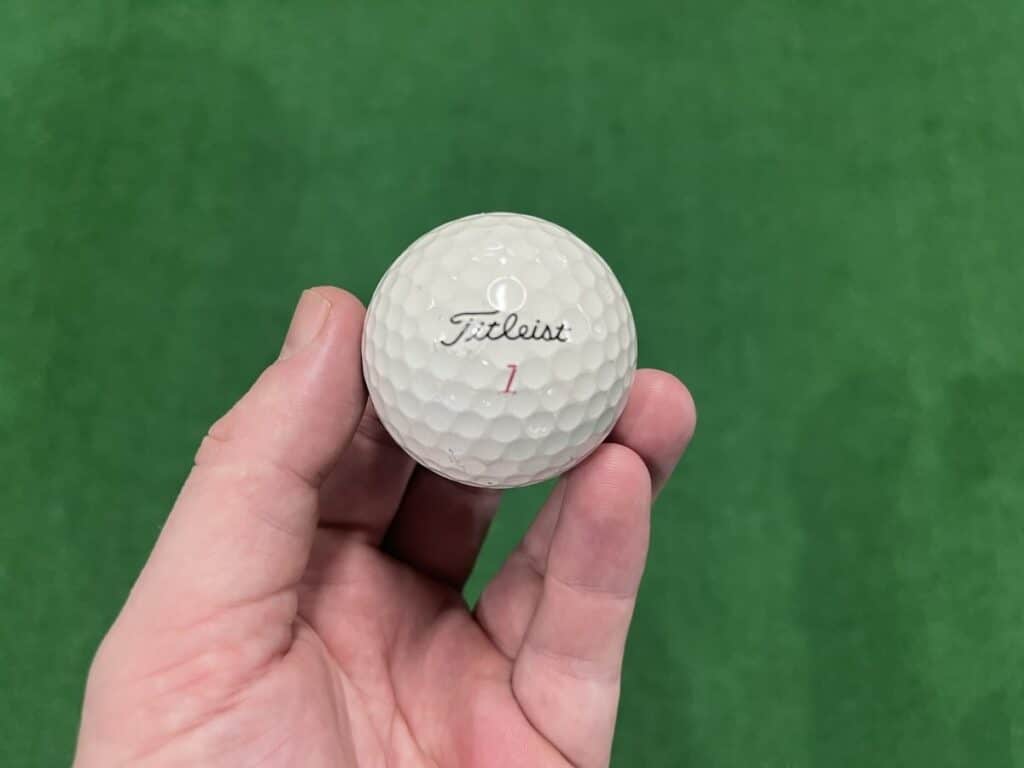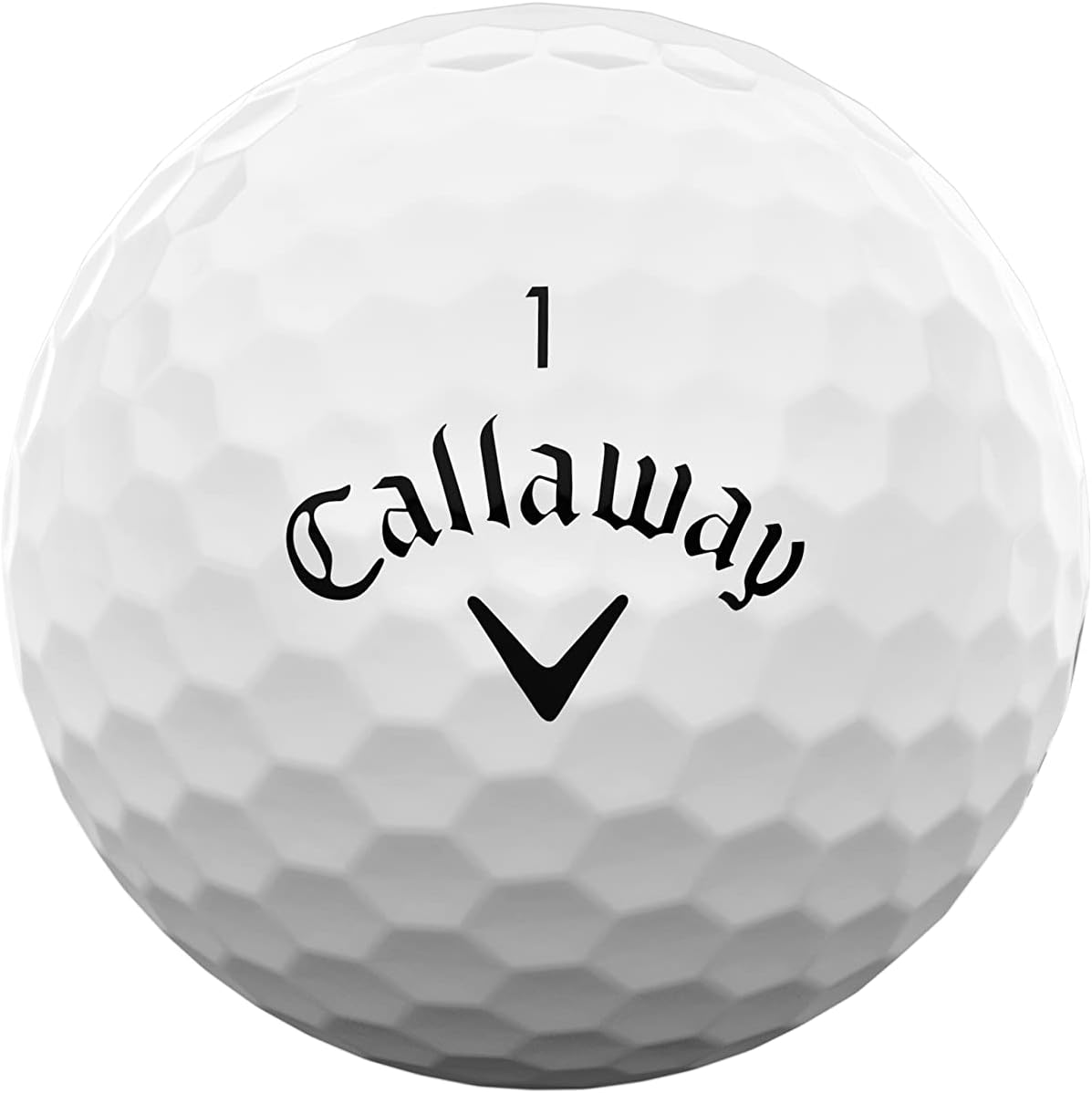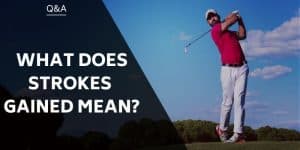Have you ever opened up a box of golf balls and wondered why each has a different number printed on it? You probably see 1 2 3 4 on your balls; many people don’t know what they mean.
Every golf ball manufacturer will print one or more numbers onto their balls, and these numbers can mean different things depending on where they are on the ball and who manufactured it.
So, what do the numbers on golf balls mean? The numbers on golf balls, typically seen below the brand name, primarily aid in identification, ensuring players can distinguish their balls from others and avoid penalties. Additionally, these numbers can indicate specific ball characteristics or models for seasoned golfers, aiding in strategic game choices based on course conditions.
Any golfer will not want to miss out on this info because it can help you avoid stroke penalties. Plus, you can look good among your buddies and enlighten them with your newfound knowledge.
Let’s take a closer look at the numbers, why they are there, and what the numbers on golf balls actually mean.
What Does a One-Digit Number Mean on a Golf Ball?
The single-digit number on a golf ball is below the brand name smack in the middle of the golf ball is usually only there for identification purposes. This number will range from 0-9, but the most common numbers printed are 1-4.
The only real purpose of the number is to make it easier to differentiate your ball from your playing partners. This helps ensure you each play the correct ball and avoid penalties.
You may find that you are playing in a four-ball, and you and two of your playing partners are playing with the same golf ball brand. The printed numbers will help tell them apart throughout the round.
If you only have the same number of balls, you can add your initials or other individually identifying mark with a permanent marker pen. Most golfers will do this anyway.
A box of 12 golf balls will usually be divided into four sleeves, each with three balls. Those three balls will then all have the same number printed on them. So, one sleeve will have three balls with the number ‘1’ on them, another with three balls with the number ‘2’, and so on.

What Does a Two-Digit Number Mean on a Golf Ball?
There are a few reasons why a golf ball may have a two-digit number printed on it.
Firstly, it may be for the same reason mentioned above regarding the single-digit numbers. I know Taylormade and Titleist use double-digit numbers for identification purposes on some models of their balls. They use the numbers 00 right through to 99. It’s something a little different.
Secondly, a double-digit number may be used to indicate the compression rate of the golf ball. This is something that very few manufacturers do today but it was popular in the 1990s.
Compression ratings back in the 90s ranged from 70-80 for a ball that was suited to a female golfer, right up to 100+ for a ball more suited to a male golfer. Today, the compression rating is linked more to your swing speed so that a lower compression number would be suited to someone with a slower swing speed, for example.
Very few golf balls today have these numbers printed on them, but if you are playing an older refurbished ball, you may still see its compression rating.
What Does a Three-Digit Number Mean on a Golf Ball?
You may notice a triple-digit number printed on your ball, ranging from 300 to 500. This number will usually represent how many dimples are on the golf ball.
Manufacturers used to print these numbers on the balls a lot more than they do now, so again, it is a number you might not find on the modern golf ball.
The dimple count is by no means a representation of the quality or performance of your golf ball. However, the dimple count will still be mentioned on the box somewhere if it is not printed on the ball.
If you want to know how and why dimples affect a golf ball, check this video out from Titleist.
Other Numbers On a Golf Ball

Many professional golfers choose to have numbers printed on their golf balls that have a personal meaning to them. Sergio Garcia, for example, used to play with the number “10” printed on his ball as a tribute to his favorite football team (Real Madrid), who had won the Champions League for the 10th time.
Justin Rose has also played with the number “99” on his golf ball. While shooting a promotional video for Taylormade, he explained that his wife Kate’s lucky number was 9, so he chose “99” to hopefully double the luck. The number was also printed in gold to represent his gold medal win during the 2016 Olympics.
Rory Mcilroy has printed the number “22” on his golf ball to help remind him of his wedding anniversary, as he married his wife on April 22nd.
If you fancy a number that means something more personal to you, Titleist offers top-of-the-range balls with an option called “Special Play Numbers,” which enables you to customize the number printed on the golf ball. You can choose any double-digit number from “00” all the way up to “99”.
Final Thoughts
Ever stared at your golf ball and thought, “What do the numbers mean on golf balls, anyway?”
Beyond just helping us figure out which ball is ours on the course, these numbers have some cool backstories. They can clue us in on the ball’s traits, compression rate, or even the number of dimples it sports.
And hey, if you’ve ever wanted to jazz up your game with a personal touch, know that from pros to regular folks, many choose numbers that have a special meaning to them. So next time you’re teeing off, remember those numbers aren’t just for show – they’re a little peek into the world of golf ball design and personal flair.
Nick is the founder of GolfSpan and an avid golfer. He's not quite a pro but has over 15 years of experience playing and coaching golfers worldwide. His mission is to bring the golfing community a better experience when it comes to choosing the right golf gear and finding the right setup for your game.








